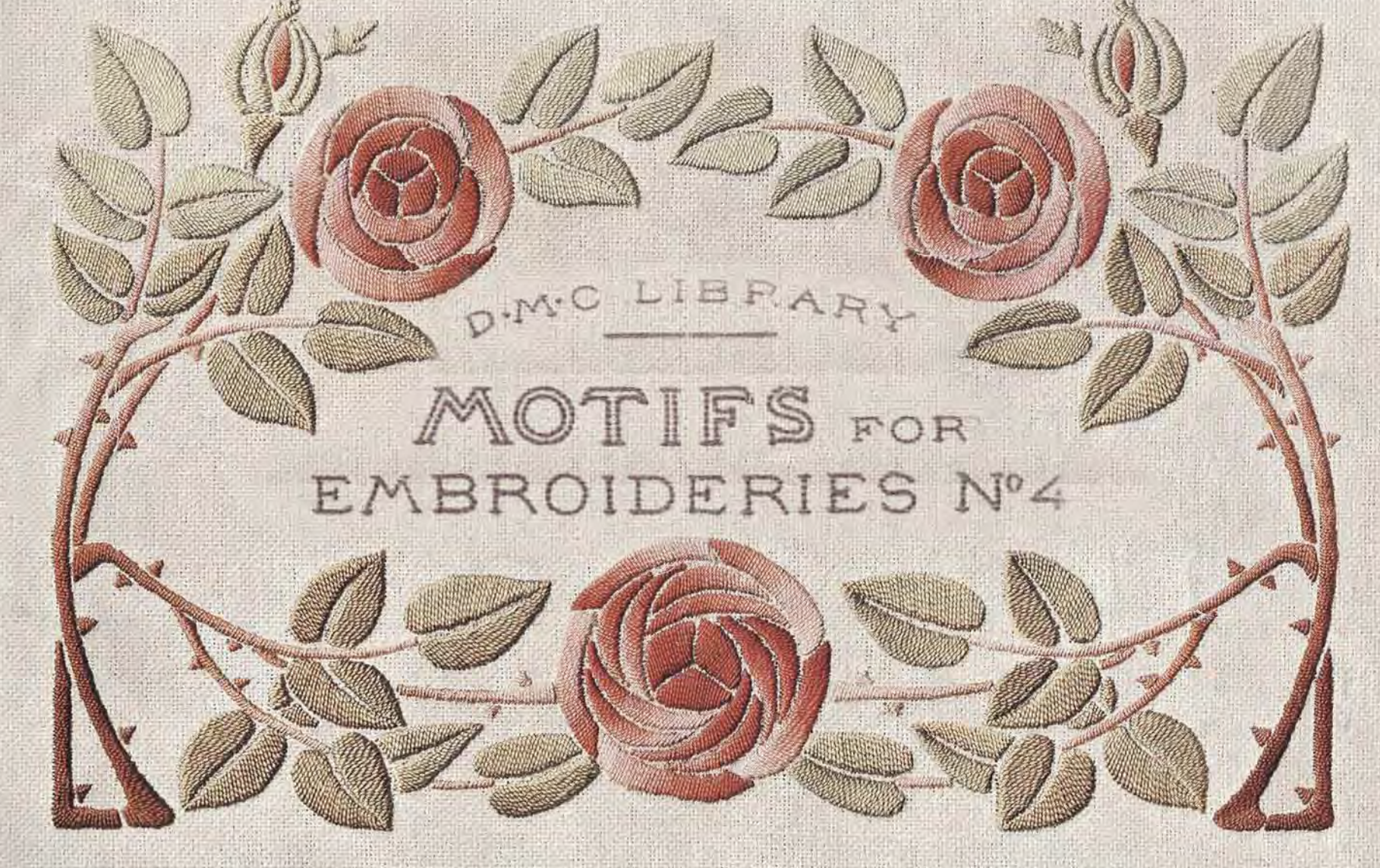Matching an All-Over Design
Matching design elements up neatly is one of the topics I get the most questions about. It can be a bit intimidating, so in this post I want to show you a real life example of matching up one of my designs.
First, in case you’re thinking “of course her examples are going to be perfect,” these are not my samples. They’re by Carrie, one of my fabulous pattern testers. I want to make sure real people have a high rate of success with my designs, so I have every one tested before release. 
The design in question is the Wisteria Garland Apron, which is the first all-over design that I have released. The design matches at top and bottom and side to side to create a seamless, endless pattern. The machine embroidery files include an alignment box to help figure out where the pieces fit together to repeat.

The basic idea is that as long as you match the corners of the red boxes, all the rest will fall into place. It sounds simple, doesn’t it?
However, I totally get it if this part still feels really stressful. Those red boxes look like they demand perfection. If they don’t match up flawlessly, does it mean your project is ruined?
Absolutely not! We’re humans, not machines. We may not line something up perfectly, something may shift during stitching, or any number of things can mean your stitch out isn’t perfect.
Here is Carrie’s test swatch of this design. You can see that her boundary boxes do not match up perfectly. There are some gaps, some are shifted a little to the left or the right. Honestly, at this stage of a project you might be freaking out a little bit.
First, keep in mind that this is a test swatch. I highly recommend with swatching any new design, so you can get a feel for how it goes together. Matching up these boxes takes a little practice as you figure out how your design, fabric, and machine all work together.
It also gives you time to learn what is easiest for you to match up. In this case, Carrie started her swatch working from the top down, but it felt awkward working in that direction. She said it was much easier to work from the bottom up and/or left to right. Let your swatch help guide you to a process that works for you.
Second, those boxes are helpful for lining things up, but they also highlight all your mistakes. Once you don’t need them any more, take them out and take a step back.
Carrie’s sample looks far better with the boxes removed. Without the boxes, you can see that the design itself actually matches up pretty well! If you look closely at the design, the only real match point is where the arches meet the bows. That point could be off a little in any direction and you would hardly notice it from a distance.  Third, every project will look better when it’s been washed and pressed. If you are still feeling unsure about your test swatch, try treating it as you would your final project. Actually, I recommend this on every swatch! Sometimes you discover puckering or other issues that are best to address before you move on to a large project.
Third, every project will look better when it’s been washed and pressed. If you are still feeling unsure about your test swatch, try treating it as you would your final project. Actually, I recommend this on every swatch! Sometimes you discover puckering or other issues that are best to address before you move on to a large project.
After Carrie’s swatch was washed and pressed, it looks great. Even though the boxes weren’t perfectly matched up, you really can’t tell in the final product. I would feel comfortable moving on to my final project after a swatch like this. 
If at this point you discover large gaps or issues you still aren’t happy with, keep making swatches until you figure out a process that works. Maybe you need to stitch sections in a different order. You might need to change you fabric, thread, stabilizer, or tension. You might need to practice your alignment technique or print out a paper template to help with placement. If you’re really stuck, shoot me an email or post on the Facebook page and I’ll help you brainstorm how to fix it.

 Previous Post
Previous Post Next Post
Next Post
